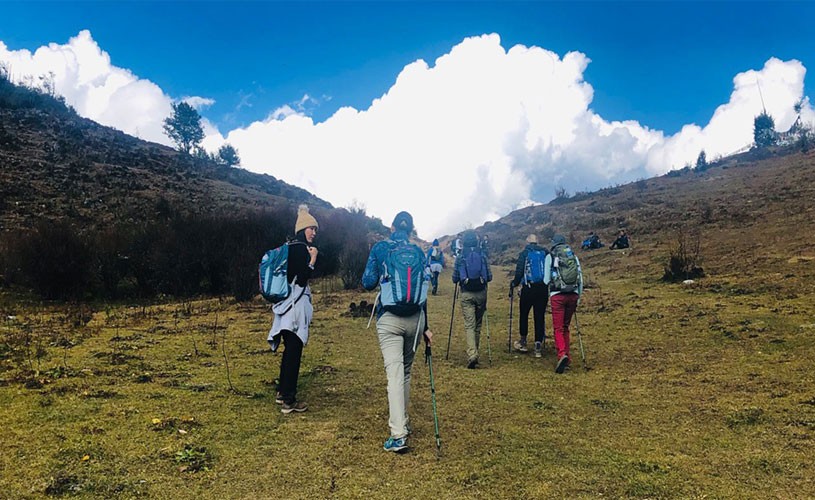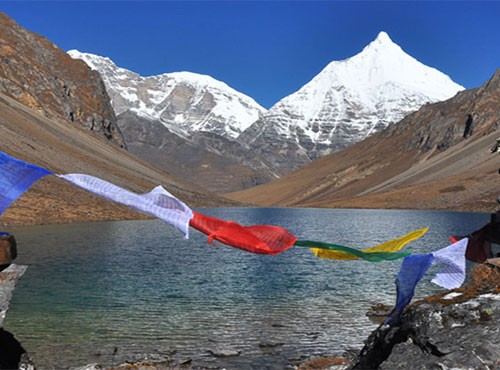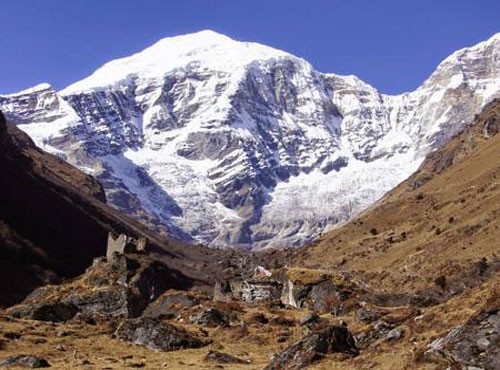Laya Gasa Trek Overview
Laya Gasa Trek is the most beautiful and unspoiled long-distance trek in Bhutan. The trekking route runs alongside Bhutan’s border with Tibet offering stunning Himalayan landscape views. Our 19-day-long Laya Gasa Trek takes you to Bhutan’s pristine, remote, isolated high Himalayas. This trek also introduces you to the Layap community in northwest Bhutan. Laya in the Gasa district is home to the Layap ( Dzongkha) community. They are an indigenous group residing in Laya, just below the Tsendagang mountain. While on the journey, we might cross paths with Bhutan’s national animal Takin, Himalayan blue sheep, and spot the exotic Himalayan Blue Poppy, Bhutan’s national flower.
Laya Gasa Trek begins in Paro with an acclimatization hike to Taktsang Palphug Monastery ( Tiger’s Nest), the world-famous sacred Buddhist site- a temple complex on the cliffside in Upper Paro Valley. As we move to higher altitudes, we acclimatize once again in Jangothang at 4,040m on the sixth day of our trek. We continue through beautiful alpine meadows with stunning views of Mt. Jomolhari, Tsherimgang, and Jichu Drake accompanying us. We also cross high mountain passes. We follow the Jhomolhari trekking route till Lingzhi, then gradually drop northwest towards Laya. The northern highlands of Laya and Gasa have unique cultures and traditions.
The regions house semi-nomadic tribes of indigenous communities like the Layap and are home to Himalayan animals like blue sheep and Takins. We relax at the natural hot springs in Gasa. Gradually, we move downwards to Thimpu, then to Paro, and then take a flight to our respective destinations. Adventure Club Trek has been organizing trips to Bhutan, Tibet, and Nepal since 2008. Our Laya-Gasa Trek itinerary comes with an acclimatization period, an experienced and well-trained guide, and an overall well-managed schedule, which is customizable at an affordable price. We also offer shorter treks in Bhutan, like our Jhomolhari Trek-12 Days, Cultural Tour of Bhutan-6 Days, and Druk Path Trekking-10 Days. Find all our Bhutan Treks and Tours Here.
Major Highlights of the Laya Gasa Trek
- Trekking in remote Bhutanese Himalayas
- Trekking the trails of indigenous Layap people, Bhutan’s national animal Taking and rare blue poppy flower
- Crossing high passes like Balela Pass at 3,740m
- Shingela Pass at 5,010m, Jarela Pass(4,750m), Gogu Las Pass(4,500m), Shakepass at 3,980m
- Amazing views of Mt. Drake, Mt. Jomolhari, Mt. Tserim Kang, and Mt. Gangchen Ta Peak, among others.
- Sightseeing in Paro, visiting Tiger’s Nest, Drugyal Dzong, and Rinpung Dzong, among other historical sites.
- Sightseeing in Thimpu, visiting Tashichho Dzong, a fortress, monastery, craft bazaar for local art, National Library, and Memorial chorten of Bhutan’s third King, Jigme Dorji Wangchuck.





